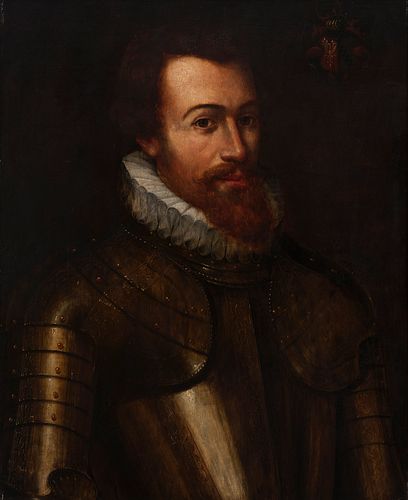Dutch school; first half of the seventeenth century. "Portrait of a gentleman". Oil on panel.
Lot 29
About Seller
Setdart Auction House
Carrer Aragó 346
Barcelona
Spain
Setdart Subastas was born in 2004 and is currently the first online art auction in Spain with solidity, prestige and reliability guaranteed by our more than 60,000 users. Setdart has a young, dynamic and enterprising team ready to successfully manage the purchase and sale of art works through custom...Read more
Estimate:
EUR€3,000 - EUR€4,000
$3,125 - $4,166.67
Absentee vs Live bid
Two ways to bid:
- Leave a max absentee bid and the platform will bid on your behalf up to your maximum bid during the live auction.
- Bid live during the auction and your bids will be submitted real-time to the auctioneer.
Bid Increments
| Price | Bid Increment |
|---|---|
| EUR€0 | EUR€10 |
| EUR€200 | EUR€25 |
| EUR€500 | EUR€50 |
| EUR€1,000 | EUR€100 |
| EUR€3,000 | EUR€200 |
| EUR€5,000 | EUR€500 |
| EUR€10,000 | EUR€1,000 |
| EUR€20,000 | EUR€2,000 |
| EUR€50,000 | EUR€5,000 |
About Auction
By Setdart Auction House
Oct 20, 2021
Set Reminder
2021-10-20 07:30:00
2021-10-20 07:30:00
America/New_York
Bidsquare
Bidsquare : OLD MASTERS
https://www.bidsquare.com/auctions/setdart-auction-house/old-masters-7700
Setdart Auction House sofia@setdart.com
Setdart Auction House sofia@setdart.com
- Lot Description
Dutch school; first half of the seventeenth century. "Portrait of a gentleman". Oil on panel. Presents restorations, repainting and slight damage. Size: 71 x 58 cm; 92 x 77 cm (frame). We see in this work a male portrait that presents us a gentleman of mature age, with a thick beard, soberly dressed in a suit of armor, on which is superimposed a large white ruff. The luminosity of the face stands out in this work, contributed by the flesh tones and a spotlight, directed towards the face. The author has wanted to emphasize especially the look, which the protagonist fixes directly on the spectator, a feature that tells us about the psychology of the character, breaking in part the protocol distance typical of the baroque portrait. The composition is sober, typical of the Dutch portrait painting of the time: the character appears with a long bust, turned three-quarters with his head slightly turned to the front, in the foreground, against a neutral, dark background, although somewhat more illuminated around the head of the character. His face is modeled through a contrasting light of tenebrist heritage. The portrait, both individual and group, and even the character portrait, embodies the relationship of the individual with society and, therefore, with the State. This genre covers a third of the total production of the Dutch Baroque, and its main renovator in Holland is Frans Hals who, thanks to the power with which he marked the character of his models, penetrating their personality to the point of giving them vitality and spontaneous truth, was able to free himself from the prevailing late mannerism, giving rise to a new conception of the portrait. Faced with the exuberant and elegant Mannerist portrait, of virtuous and elaborate execution, at the beginning of the 17th century a general reaction was unleashed, based on compositional austerity and operational sobriety. Thus, against the desire for virtuosity of the previous century, the portraitists of the Dutch Baroque recovered the previous models in a more sober and solid way, focusing on the characterization of the characters, the elegance of the poses and the delicate capture of the qualities of the different objects. Italian school; 17th century.
- Shipping Info
-
In-house shipping available. Please inquire at admin@setdart.com.
-
- Buyer's Premium



 EUR
EUR CAD
CAD AUD
AUD GBP
GBP MXN
MXN HKD
HKD CNY
CNY MYR
MYR SEK
SEK SGD
SGD CHF
CHF THB
THB









